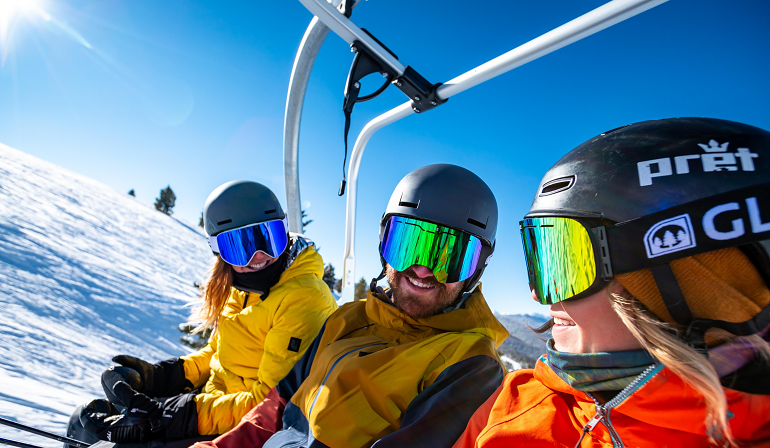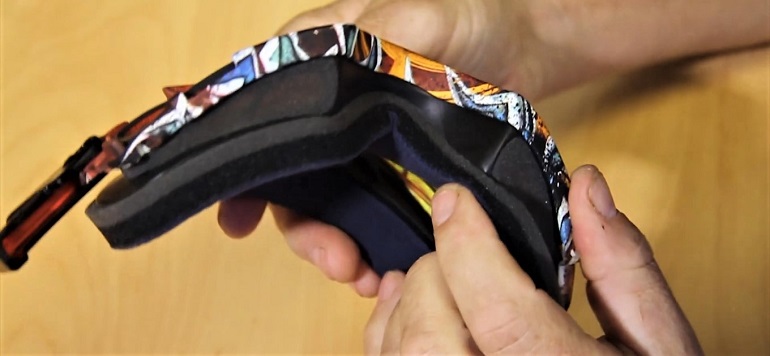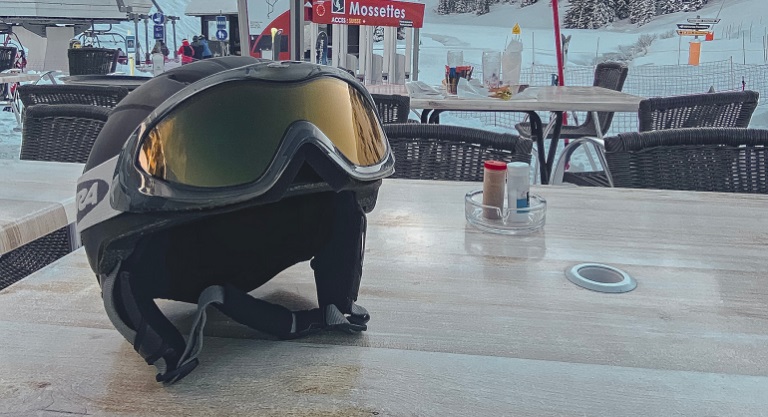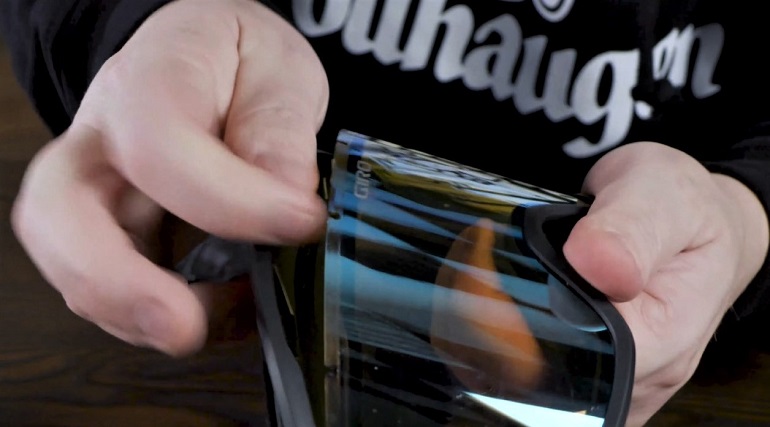Introduction
What if we ask you to imagine a view you would want to ace and go deeper in, but it seems blurry and not at its best? Well, not an ideal situation to get your foot in a blurry scenery.
Ski goggles are the deciding factor whether you want to step into the fog or not. Having that perfect pair of ski glasses can make your trip worth a shot. I mean who would not want to see cotton ice surrounding you while you ski?
How would you want your ski goggles to look? I would want my goggle lenses to have adjustable vents that allow perfect space for the warm air to flow to prevent fogging. We do not just end here, we will dig in deeper for more details.
But before moving ahead, let’s have a look at the factors responsible for fogging up our goggles.
Why Do Goggles Fog Up?
Before moving into further details, we should know what causes the goggles to be fogged. When there is not enough air ventilation, it makes the problem worse by building up warm and moist air inside.
The outside temperature does not combine well with the moisture produced inside the lenses, thus resulting in fogged-up goggles. Whether you see it one way or the other, the key factor for this is the excess moisture in the goggles.

But how to avoid foggy glass is the question. Don’t worry mate, I am still here – not leaving in the middle of something so important. That call? I can pick later!
How To Keep Your Goggles From Fogging Up – Tips
Let’s go through the following helpful tips to combat fogging in your ski goggles.

Choose a Quality Pair of Goggles
When it comes to ski goggles and the thought of why it is used, everyone would agree that there can be absolutely zero compromises on quality.
If I’d be in a store to purchase them, I would definitely be looking for one which has a frame designed with the delicate mindset of letting the wind/air move swiftly from all directions, making sure condensation and the fog get a real tough time settling in. Of course, that means great ventilation with ample points.

And not to forget, this won’t be much of a help if the goggles I buy aren’t compatible with my helmet, so I would definitely carry my helmet with me when I go in for the purchase.
It’s like both complement each other, and I’d know if they would sync. Who would want their goggle fogging up while in mid-air during that fantastic ski jump just because the helmet blocked the vents?
Wear a Helmet With a Visor
A helmet with a visor is recommended. It protects your eyes from the UV rays that are emitted by the sun. People with specs also use them as it gives them enough space to fit. The visor is already attached to the helmet and can be folded down just before you start your trip.
But in some cases, people would not want the visor to be included. Reason? Quite straight and simple. If the helmet does not sit well, it can allow the cold air to pass inside the lens, making it a trouble for the rider.

Check the Vents for Snow and Moisture
A blocked vent means unwanted moisture, air, and snow inside your goggles. You don’t want moisture-attracting ski goggles on a trip like this.
Make sure you check all the exits before your take off, or else the snow could play with you rather than you playing in the snow. Brush off any snow that sits on your gloves or helmet, and avoid touching your goggle lenses.
Resist Wiping the Inner Lens
The inside of the lens has an anti-fog coating layer. It would be best if you did not mess with it by wiping the lens with hard hands. Be very careful when you clean the inside of the lens.

If the snow gets in for instance, just lightly dab the goggles to brush off the snow particles. If it melts down, best to let the goggles dry on their own. If necessary wipe it with the soft microfiber cloth that comes with your goggles. Remember to not apply pressure – just dab dry it!
Avoid Putting Your Goggles on Top of Your Helmet
This is criminal! I do understand you need some rest. But while you rest don’t damage the goggles by placing them on top of your helmet. If you do, the perspiration from the body heat is going to go inside your lens.

All goggles have anti-fog coatings that physically absorb moisture to avoid fogging. By keeping the glasses on your cool ski helmet, you will choke its way.
Don’t Overdress!
You don’t just need tons of layers to protect you from the crazy snow – you also need meaningful layers. Overdressing will make your body sweat from body heat.
The combination of the inner and outer environment will collide with the cold surface of your goggles, surrounding the lens with moisture. This will affect your overall ventilation and view making your ski an unpleasant experience.

Ideally, there are three layers recommended for your protection.
- Inner layer – the inner layer helps the body to regulate cold temperature. Go for wool or polyester, as it will keep you warm when wet and dry out quickly.
- Mid-layer – the game changer! It is an insulating breathable layer so that your body is allowed to push the moisture outward.
- Outer layer – this is your defensive barrier against rain, wind, and snow but should allow sweat vapors to escape. It kicks off further moisture from getting into your clothing and allows the inner two layers to work effectively.
- Keep moving
This is pure science; more movement means you’ll have well-ventilated helmet goggles. It might not always be possible for you to keep the body in motion but try for longer runs for better air flowing through your foggy goggles. When direct air hits your face, it will evaporate all the moisture inside.
Don’t Tuck Neck Warmer or Balaclava
Everyone would want to keep themselves safe from getting cold inside. But tucking in a neck warmer can eventually make your breathing particles a problem for you. It will fog up your lenses, creating uneasiness while you are on the go.
It is the first indicator that you are on the wrong side. To mitigate fogging, wear a breathable fabric/neck gaiter or balaclava that allows all the hot air to flow outwards.
Keep a Backup Pair or Lens Handy

It is always recommended to have a backup pair of goggles with you. After all the care you do sometimes you can still end up with foggy goggles – aah! life! Again, a low price set will do the work for you. Just be sure not to touch the new pair of goggles with your gloves or rest them on your helmet.
Another viable option is to get a pair of goggles with interchangeable lenses as plan B.
Let Your Goggles Dry at the End of the Day
They need a break. After a long day of skiing, don’t put your goggles in your cold car. This will only end up being the worse decision for them. Natural air can do wonders to their lenses while they self-dry. It removes away all the moisture that could possibly be in there.

Remember not to use a hand dryer on them, it can be a barrier to its anti-fog treatment. Once dry, place them back in their soft microfiber cloth to avoid any scratches.
Reapply an Anti-Fog Coating to Old Goggles
Trying won’t harm. If you can’t let go of your first goggles because you wish to extend their use, you can try using an anti-fog treatment.
Though there is no guarantee of your goggles lenses to show up bright and shine like they used to. It all depends on their age and condition. There is no ‘tried and tested’ treatment available for their longer life, however, you can still give it a shot.
Key Features and Upgrades
Once you build up your skill level, you can proceed with an upgrade. But first, you need to know the key features in order to get hold of good new goggles.

Lens Shape
The lens shape of the goggles is the most important factor. For visual perfection and a clear view in any kind of weather, the good shape is a must. Toric lenses have topped the previous lenses i.e., spherical and cylindrical. They have a tighter curve horizontally, providing a vast view.
Lens Tint
Everyone has the same experience with lens tint. VLT range (Visible Light Transmission) is the percentage of the light that the lens allows to pass through. Every base color tint has a different VLT providing a different range of brightness to the eye. But if you want to opt for a standard lens pair, better go for a photochromic lens that alters depending on the outside conditions. Photochromic lenses get darker when exposed to sufficiently frequent light here we mentioned a complete detailed review of the best photochromic ski goggles.
The Fit of the Frame
For getting a good fit for your face, it is best advised to make the match according to the helmet you will be wearing. Too much pressure on your eye socket means the helmet is too tight.Cold air and snow getting in your frame means? Yes, you guessed it right! those glasses are too big buddy.
Conclusion
Skiing is a fun sport. And by taking preventative measures, you can make your ski an experience to remember. Just carry the right equipment with you. Make sure you buy the best anti-fog ski goggles to stay safe on the slopes!
Don’t fall for anything low, you do not want to compromise on an outing this good. Take out your snowboarding gear and get your ski luggage bag ready, my friend – the season is here!
0 Comments